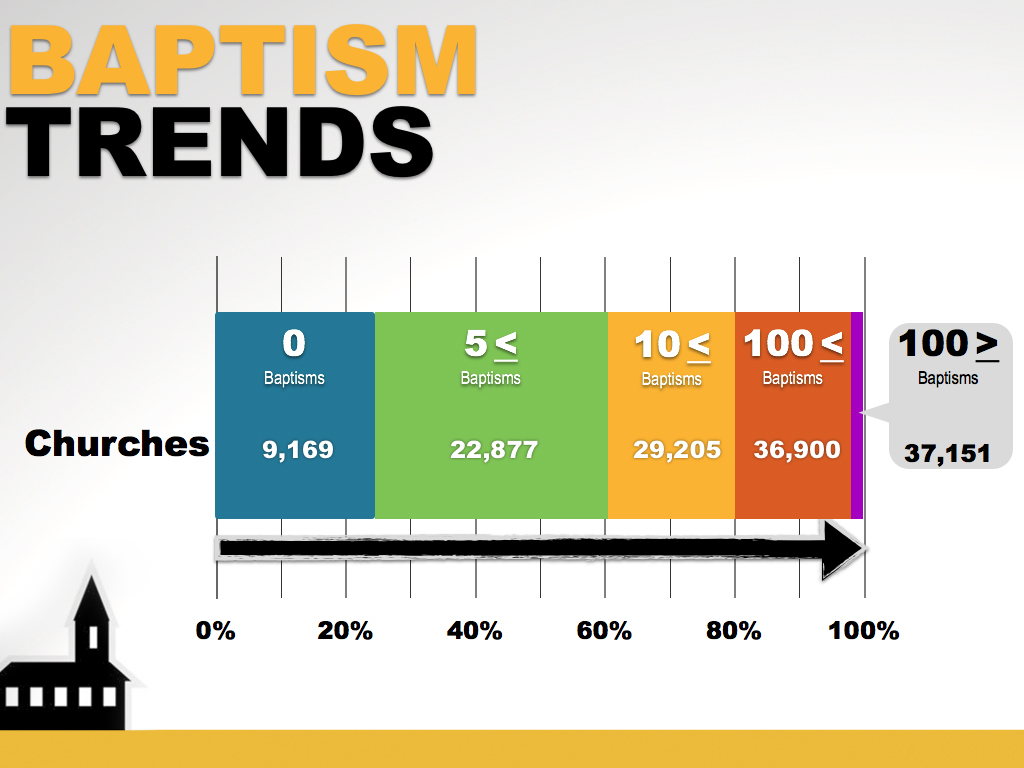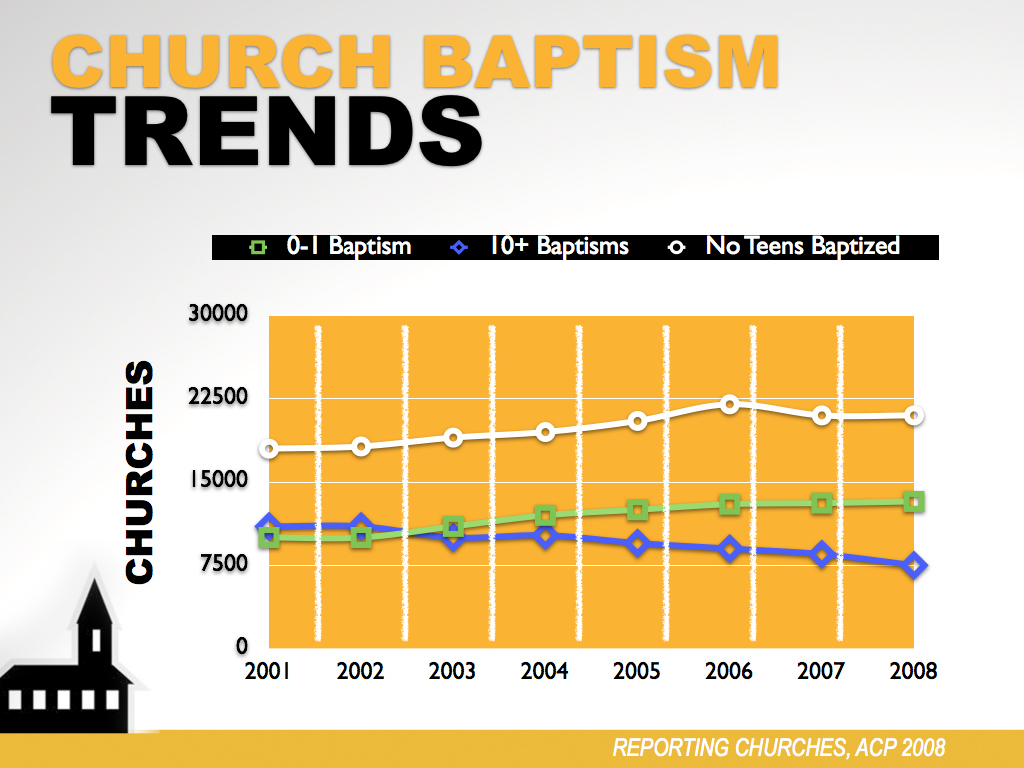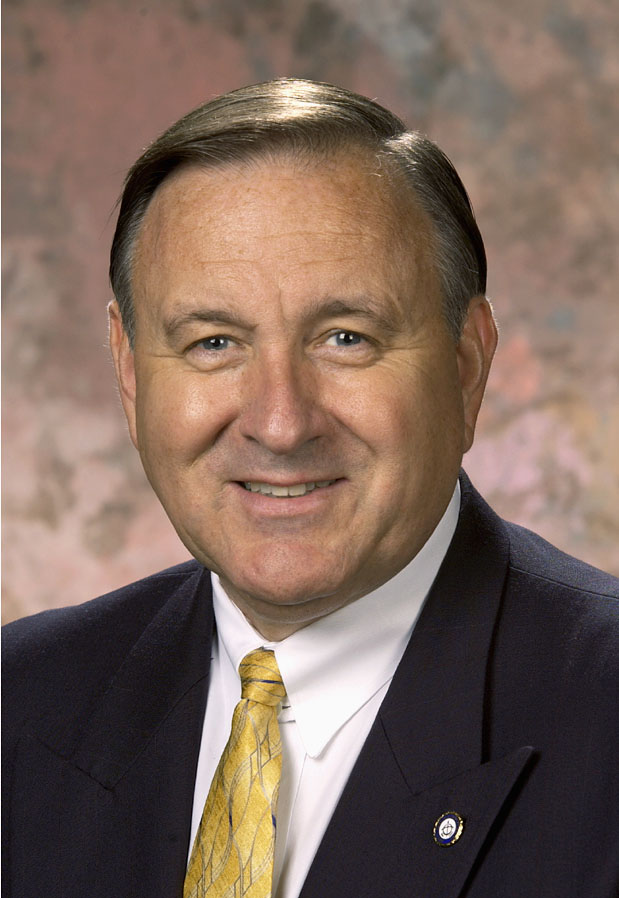
ALPHARETTA, Ga. (BP)–I have been asking myself a question over and over since the Southern Baptist Convention met in Louisville last year, voting to form the Great Commission Resurgence (GCR) Task Force. My question is this: Is our convention’s main problem primarily organizational, structural, systemic, faulty processes or partnerships — or is it spiritual?
I have a great deal of respect for Chairman Ronnie Floyd and all the work being accomplished by the GCR Task Force. It is impossible for most of us to realize the excruciating hours of analysis they are spending as they examine mountains of material and information. Their assigned task is huge and so few months remain for them to reach conclusions and make recommendations to the Convention in Orlando as to how Southern Baptists can more effectively and efficiently fulfill the Great Commission. I have committed to pray regularly for these dedicated convention servants. I would also encourage you to continue praying for them, asking the Lord to give them wisdom, discernment and the leadership of the Holy Spirit to understand where the Lord wants our convention to go in these crucial and opportune days.
 Since I was asked in August to serve as interim president at the North American Mission Board, I have often repeated that NAMB’s leadership and staff welcome any recommendations that will make us more effective or more efficient. Time is too short and the needs in the culture of our day are too many for us to settle for anything less. With 255 million lost people in North America — three out of four individuals — the hour is urgent for Southern Baptists to be doing all we can to fulfill the Great Commission given to us by our Lord!
Since I was asked in August to serve as interim president at the North American Mission Board, I have often repeated that NAMB’s leadership and staff welcome any recommendations that will make us more effective or more efficient. Time is too short and the needs in the culture of our day are too many for us to settle for anything less. With 255 million lost people in North America — three out of four individuals — the hour is urgent for Southern Baptists to be doing all we can to fulfill the Great Commission given to us by our Lord!
 I would suggest the greatest need of Southern Baptists is spiritual. Two minutes of Pentecost would do us more good than 20 years of reorganizing or restructuring. This is not to say that some restructuring or reorganizing could not make us more effective or efficient. It certainly can. But allow me to share just some of the rationale as to why I believe our need is spiritual.
I would suggest the greatest need of Southern Baptists is spiritual. Two minutes of Pentecost would do us more good than 20 years of reorganizing or restructuring. This is not to say that some restructuring or reorganizing could not make us more effective or efficient. It certainly can. But allow me to share just some of the rationale as to why I believe our need is spiritual.
 Research completed in 2009 by Richie Stanley of NAMB’s Missional Research Center found that from 2003 through 2008, 29 percent of SBC churches were growing, 43 percent were plateaued and 28 percent of SBC churches were declining. This means 71 percent of SBC churches are plateaued or declining. Why is this happening? For some it is a shift in population. For others it is a change in community demographics or economics. For others it is the secularization of our society. But I believe for the majority of our churches, it is a loss of passion to reach lost people with the Gospel and a drifting away from a sincere commitment to fulfill the Great Commission.
Research completed in 2009 by Richie Stanley of NAMB’s Missional Research Center found that from 2003 through 2008, 29 percent of SBC churches were growing, 43 percent were plateaued and 28 percent of SBC churches were declining. This means 71 percent of SBC churches are plateaued or declining. Why is this happening? For some it is a shift in population. For others it is a change in community demographics or economics. For others it is the secularization of our society. But I believe for the majority of our churches, it is a loss of passion to reach lost people with the Gospel and a drifting away from a sincere commitment to fulfill the Great Commission.
Data from the Annual Church Profile (ACP) gathered by LifeWay Christian Resources reveals some alarming information in 2008. Twenty-five percent, or 9,169 of Southern Baptist churches, reported no baptisms. Sixty-two percent — that’s 22,877 churches — saw less than five. Another 22 percent — or 7,946 SBC churches — baptized more than 10, and 251 churches, that’s less than one percent, baptized more than 100.
In 2008, there were officially 44,848 churches in the SBC, not including the 5,267 church-type missions. There were 37,151 churches that reported on the ACP, and 7,691 churches did not report. The numbers above reflect only the 82 percent of churches that reported on the ACP.
Part of the issue of declining baptisms and other growth measurements on the ACP is that fewer churches are reporting, but this certainly is not the main problem. The average number of baptisms for all reporting churches in 2008 was 8.75. If the 7,691 non-reporting churches would have maintained this average, we would have reported 50,409 more baptisms (392,607 instead of 342,198).
When we look at year-to-year trends, unfortunately the news gets worse. In 2008, 25 percent of reporting churches indicated “0” baptisms. In 1999 that percentage was 18 percent. It has grown steadily since then to 19 percent in 2000, 20 percent in 2001 and 2002, 21 percent in 2003 and 2004, 23 percent in 2005 and 2006 and 24 percent in 2007. With each year that passes, a larger percentage of our churches baptize no one.
Since 2001, the sad fact is an increasing number of our churches are baptizing no one, fewer of our churches are baptizing 10 or more people annually and an increasing number of our churches are baptizing no teenagers.
I believe these statistics bear out that our primary problem in the SBC is spiritual. It is reflected in plateaued and declining churches, in decreasing baptisms, conflict in churches, dissension among church leaders, moral failure on the part of pastors and church staff, and a diminished or total loss of a burden for lost, unchurched and/or unreached peoples. The church in North America increasingly is too much of the world and the world’s ways are too much in the church.
In 2 Chronicles 7:14, God makes it plain when a nation or a people move away from God, the Father looks first and foremost to His people, the church. First Peter 4:17 says, “For it is time for judgment to begin with the family of God…”
Where do we begin? The leaders of God’s churches and this denomination must evaluate anew our passion and commitment to the Great Commission by the personal sharing of the Gospel. As leaders, we must lead our members to do likewise. We must begin to believe, as never before, that anyone without a personal relationship with Jesus Christ as Savior and Lord has no hope of heaven.
But this renewed passion and commitment will only flow out of each of us taking a spiritual inventory, evaluating if we are as close to the Lord and as committed to His agenda as we once were. In many of our lives, this will result in profound repentance, revival of our walk with the Lord, commitment to living holy and pure lives, and seeing with new eyes our world as the Lord sees it. Then the empowering of the Holy Spirit will enable us to fulfill the Great Commission. When we have His power, we will operate on His agenda (not man’s). Whether we act individually, as church leaders, as members, or as denominational leaders, we will enthusiastically cooperate to do our part to reduce lostness, make disciples, build His Kingdom (not ours), and be truly focused on fulfilling the Great Commission. We will be on mission Christians.
Almost any organizational structure will work for the SBC if our people, our churches and our denominational entities are spiritually renewed. When our people and our church leaders are renewed spiritually and become more concerned about pleasing the Lord rather than man, then we will see an increase in baptisms, disciples, resources, growth, unity, passion, cooperation and commitment to fulfilling the Great Commission.
How do I know this can happen? Because throughout our convention there are examples of churches that have seen increased baptisms when they get serious about the issues I just mentioned above. First Baptist Church Kirksville, Mo., was in the plateaued/declining category, but in recent years they have seen a turnaround. In 2006, they only baptized one. In 2007, the number rose to seven. In 2008 it was 13 and in 2009 they baptized 39. That’s more than at any time since 1964.
The pastor says the turnaround started when church members began seeing the needs of their community with new eyes. That resulted in a renewed commitment to taking the Gospel door-to-door, prayer-walking, and distributing Scripture.
First Baptist Church in Taylors, S.C., was also in the plateaued/declining category until my friend Frank Page (NAMB’s new vice president for evangelization) came to lead the church. He called the church back to the Bible, as well as to prayer, repentance, holy living, evangelism, discipleship and a renewed commitment to fulfilling the Great Commission.
Several basic indicators in the church saw major improvements: baptisms went from 45 in 2001 to 145 in 2009; Sunday morning worship went from 1,308 to 2,310; Sunday School attendance rose from 1,153 to 1,875; mission team and project participants went from 172 to 1,197 and budget rose from $3.1 million to $6.7 million. Prior to Frank’s arrival, First Taylors had never planted a church. Since 2001 they have started five churches that are still active today.
In Frank’s last full year as president of the SBC (2007), FBC Taylors led the state of South Carolina in giving to the Cooperative Program, the Annie Armstrong Easter Offering, the Lottie Moon Christmas Offering, and the state missions offering. The 145 baptisms in 2009 placed FBC Taylors in the 99.5 percentile for baptisms in the entire SBC.
Elsewhere, three pastors in one association were despondent about their current places of service. In fact, all three were considering resigning. But a new NAMB strategy called “Thrive,” which strengthens churches by working with them through their local association, has restored the call of God in the lives of these men and to their place of service. Thrive helped them develop a resolve that says, “Let’s get the job done which we’re called to do.” One has seen a 75 percent increase in church attendance; one has seen an increase in membership activity including an international mission trip; and one has seen a renewed spirit of cooperation between pastor and laity that is bringing about spiritual and numerical growth for the Kingdom of God.
Examples of turnarounds like these, as well as the trends I shared earlier, illustrate the point: our problem in the Southern Baptist Convention is primarily spiritual and if we get serious with God about turning it around, He can make it happen. My prayer for 2010 is that we will be renewed spiritually and re-focused on fulfilling the Great Commission.
–30–
Richard H. Harris is interim president of the North American Mission Board.

















